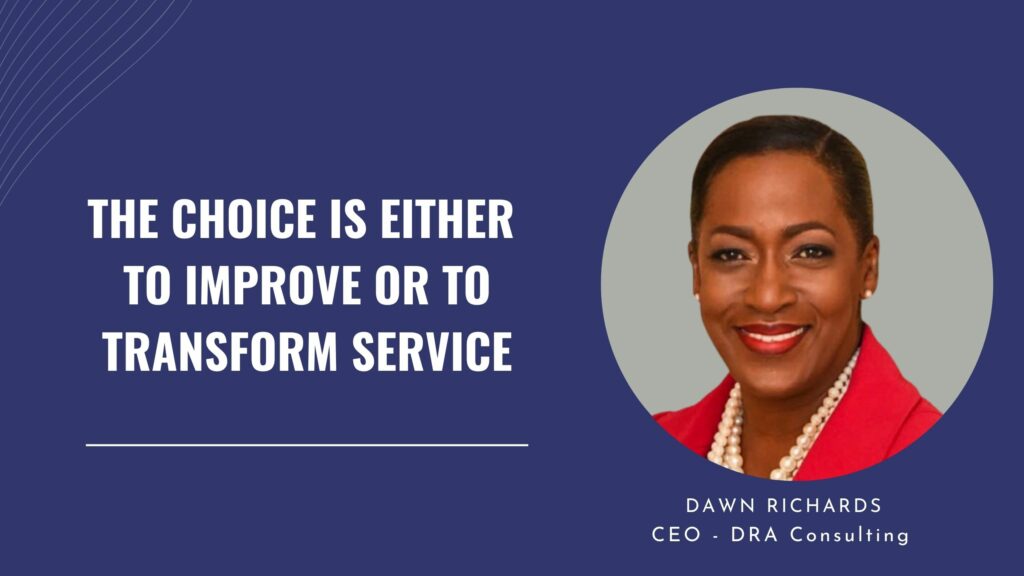Many of my conversations with prospective clients start with them saying, “We want to improve our service delivery, it’s just not up to standard.” My response, typically, is, “What do you want to improve, specifically?” The answer goes something like, “We want our employees to treat our customers better, we want to keep promises, we want to reduce complaints and we want to provide our customers with the right solutions to their needs.”
Notice anything significant in the responses to my question? These are the minimum-level outcomes that all customers should enjoy. The prospective client’s “wish list” captures the most routine and standard service delivery expectations. There’s nothing superlative about the desirable outcomes.
The problem here is the “mistaken reality” of service quality. It’s when businesses fail to realize the gravity of failing in minimum level outputs and believe that simply correcting problem spots will deliver a “wow” experience. I call this seductive reasoning because it’s easy to believe that a quick-fix will do the trick.
There are two types of businesses generally, when it comes to service delivery. Those that make “improvements” and those that deploy “transformations.”
There are two types of businesses generally, when it comes to service delivery. Those that make “improvements” and those that deploy “transformations.” These are two distinctly different processes. The former is about small, incremental changes that are temporary fixes and leak-plugging, so have a short shelf life. The latter is about a permanent solution to exceeding the customers’ needs, achieving customer success and applying golden handcuffs to the customer.
Now, if a business is already in the space where it is winning with its customers and where deploying incremental steps consistently, is part of a customer growth strategy that’s working, then there’s nothing wrong with this format. For this business, direction may be more important than speed.
Generally though, an improvement approach to service delivery is spot-specific and is preoccupied with touchpoint solutions that can include training frontline staff, adding online payment systems and upgrading the telephone system. Transformation, on the other hand, focusses on delivering a permanent solution to customer happiness and requires the business to make a one hundred and eighty degree pivot by focussing on the lifetime value of the customer. This requires keeping solutions in lock step with the customer, as his or her needs change over time.
Generally though, an improvement approach to service delivery is spot-specific and is preoccupied with touchpoint solutions that can include training frontline staff, adding online payment systems and upgrading the telephone system.
One of the biggest constraints to an “incremental improvement focussed” approach, is that the business places itself in a pendulum scenario, shifting from improvement to slippage, because there is no system for driving permanent change. Over time, this yo-yo effect may move to full throttle level and the business may find itself paddling furiously, as it slips further and further away from keeping up with the changing needs of the changing customer.
Now, I realize that some businesses are constrained by limited finances, which makes a strong case for a transformation scale solution to be rejected. But, even under constrained circumstances, a business can still revolutionize by focussing on one change at a time and making it permanent. Just the acts of making sure that all phones are answered, all messages get responses and that there’s a customer relationship management system in place to track customer interaction history, can make a difference to the dynamics of the customer interface.
Incremental improvements don’t make provision for unfreezing people from their behaviours and businesses from their corporate patterns, in a permanent way. Transformation however, does. The first decision is for a business to decide if it wants to be in a small player or a game changer domain. This first decision is critical to success because it will determine the staying power of the business, when the challenges of unfreezing people, processes and lagging technology kick in. We all know that when the going gets tough, we need to remember our “why” to get us to the other side intact.
Transformation, on the other hand, focusses on delivering a permanent solution to customer happiness and requires the business to make a one hundred and eighty degree pivot by focussing on the lifetime value of the customer.
Depending on the starting point, it can be a long journey for a business to get to the point of “wowing” its customers. There is, however, always the opportunity to do better by the customer and to move the customer experience needle to a new landing spot.
A determined business that knows its “why” simply needs to find the “how.”

